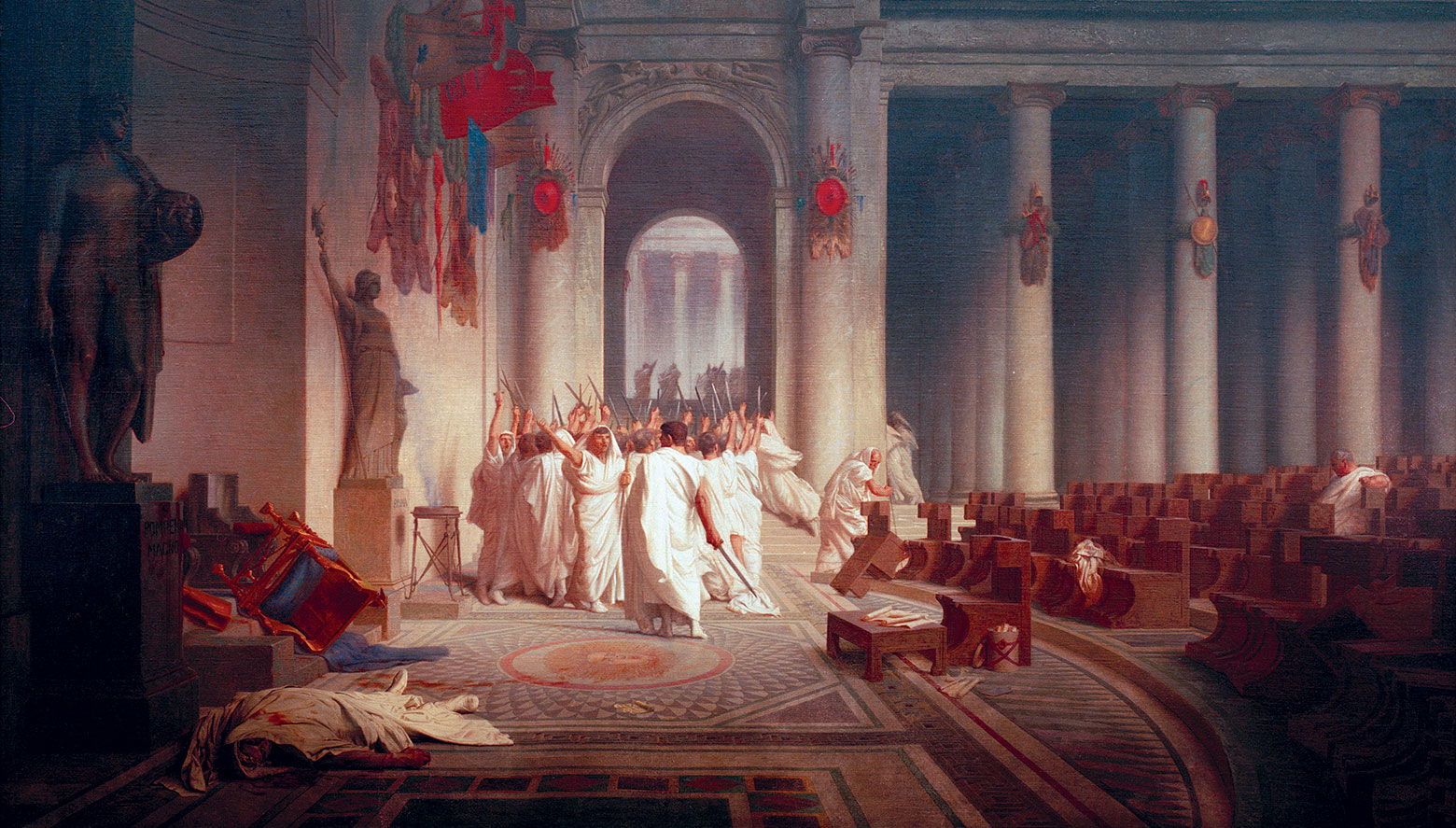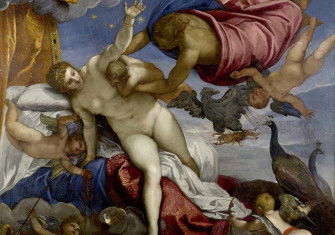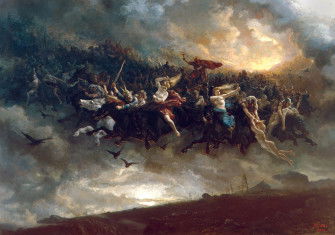The Death of Caesar
A vivid portrait of one of history’s most momentous conspiracies.

A huddle of conspirators walks away from the lifeless, bloodied body of Julius Caesar, having stabbed the great Roman general and statesman 23 times on the Ides, or 15th, of March, 44 BC.
Caesar had recently been declared dictator perpetuo by a Senate fearful of its rumoured abolition in a series of reforms by Caesar, who had a substantial following among Rome’s Plebeians. Senators, of whom Cassius and Brutus were most prominent, had formed themselves into a grouping, the Liberatores, in an attempt to restore the Republic.
Caesar had recently announced his impending departure on a military campaign to subdue the Parthian Empire. If action was to be taken by the conspirators, now was the moment.
The setting for Caesar’s assassination was to be the Theatre of Pompey, where Brutus had organised a series of gladiatorial contests, to which he had invited the dictator. Caesar had been warned of various plots on his life, but Brutus persuaded him that the Senate would be disappointed if he did not attend. His ally Mark Antony, similarly suspicious, tried to intervene, but he was detained outside the theatre by the plotter Servilius Casca.
On his arrival, Caesar was presented with a petition by Lucius Tillius Cimber for the return of his exiled brother. When Caesar refused, Cimber manhandled Caesar, pulling down his toga. As Caesar cried ‘this is violence’, Casca thrust a dagger at his neck – and then the mob struck. Blinded by the torrent of blood that poured from his wounds, Caesar fell on the steps of the Curia.
His last words have been subject to centuries of speculation. He did not say the Shakespearean ‘Et tu, Brute’, but he may have uttered, as the Roman chronicler Suetonius claimed, ‘You too, child’.
The conspirators headed for the Capitol but were met by a bewildered, fearful crowd, who began a destructive fire. Civil war followed and the conspirators, led by Cassius and Brutus, were defeated at the Battle of Philippi in Macedonia in 42 BC by forces under the command of Mark Antony and Caesar’s nominated successor, Gaius Octavius, who became the Emperor Augustus Caesar. Augustus declared his predecessor a god – Divus Iulius – the same year.
The Death of Caesar, by Jean-Léon Gérôme, was painted for the Exposition Universelle of 1867, held in Paris. It hangs in Baltimore’s Walters Art Gallery.






